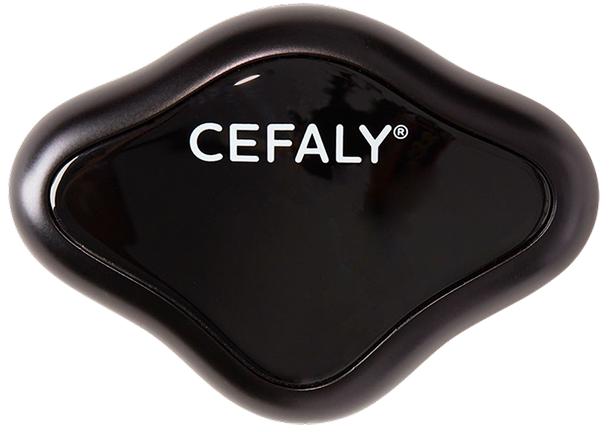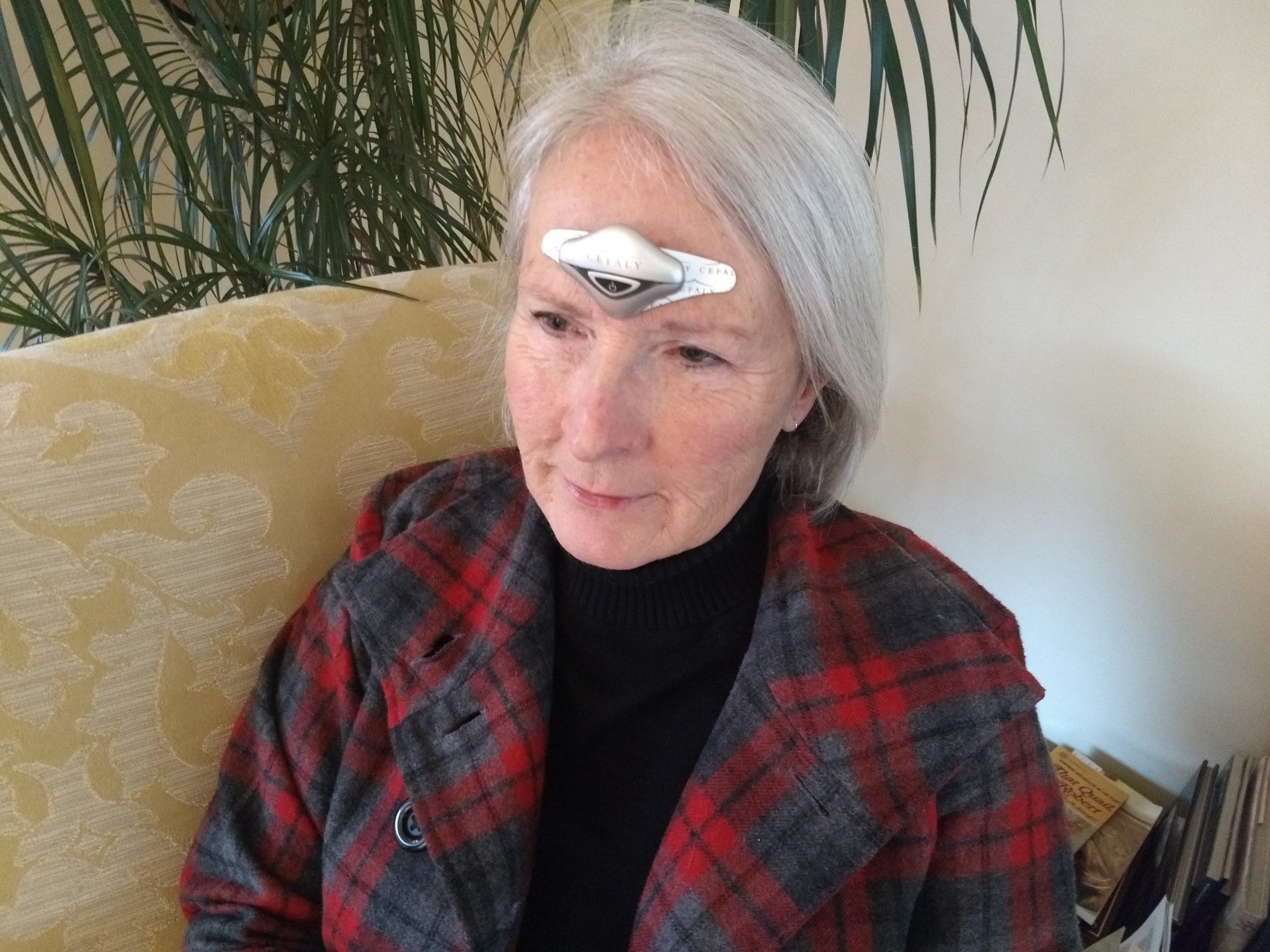- What are TMJs and TMDs?
- Can TMJ disorders cause migraine headaches?
- Symptoms of a TMJ-related migraine
- How to manage and treat TMJ-related migraine
If you’re struggling with the discomfort of a TMJ disorder and migraine headaches, you know all too well the frustration of dealing with jaw pain and persistent head pain. The interplay between TMJ disorders and migraine can make finding effective relief feel like an uphill battle. However, there is good news — by better understanding how they work together, you can find the best pain management and prevention strategies for your TMJ migraine experience.
What are TMJs and TMDs?
Your temporomandibular joints, or TMJs, are the joints between your lower jaw bone — the mandible — and the temporal bone of your skull. The TMJs are mainly responsible for jaw movement, helping you move your jaw up, down, forward, backward and side-to-side. In other words, they help you chew, talk, yawn and so on. Your TMJs are located on both sides of your face, just in front of your ears.
Inflammation or misalignment of your TMJs may result in a TMJ disorder or dysfunction — abbreviated as TMJD or TMD. The National Institute of Dental and Craniofacial Research (NIDCR) categorizes TMDs into three classes:
- Disorders of the joints
- Disorders of the masticatory muscles, those that help with chewing
- TMD-associated headaches
The third class raises a curious question for people who have a TMD and experience migraine:
Can TMJ disorders cause migraine headaches?
The connection between TMJ disorders and migraine can stem from the close relationship between your head and jaw muscles, joints and nerves. Let’s break down how one may experience a migraine attack from TMJ disorders.
Blood flow disruption
The muscles around the TMJ are closely linked with blood vessels that supply the head and brain. When these muscles are tense or inflamed, they can affect blood flow, potentially contributing to the vascular changes associated with migraine.
Heightened pain sensitivity
Chronic TMJ pain can lead to central sensitization, where the nervous system becomes overly sensitive to pain. The more sensitive a person is, the lower their threshold for migraine triggers. This sensitivity may make it easier for a migraine to be initiated by stimuli that wouldn’t normally cause one.
Inflammatory response
TMDs can involve inflammation of the joints or surrounding tissues, which can irritate nerves. Your body can have an inflammatory response that causes pain that radiates to the head, contributing to the onset of migraine. Chronic inflammation can also sensitize the nervous system, potentially making you more prone to migraine attacks.
Misalignment and poor posture
TMJ disorders may be a result of poor posture — particularly in the neck and upper back. Misalignment of the jaw can lead to compensatory changes in posture, which in turn can strain the neck and upper spine muscles. This strain can contribute to migraine or tension-type headaches (TTH).
Referred pain
TMDs may cause referred pain, which is when the pain starts in one area but spreads to another. In the case of migraine, pain may begin in the jaw and spread to other areas, such as the temples, forehead or back of the head. This referred pain may manifest as a migraine.
Stress levels
The amount and severity of stress someone experiences can have a massive impact. Stress levels can result in teeth grinding, poor sleep quality and hormonal changes, which can impact your TMD and trigger migraine attacks.
A significant amount of stress may result in bruxism, or teeth grinding. Bruxism can worsen TMD symptoms and increase the likelihood of tension headaches or migraine due to increased muscle tension and joint stress. Additionally, stress raises cortisol levels. This hormonal change may influence the occurrence and severity of migraine.

Sleep disturbances
Stress also hurts sleep quality. The more stress you experience, the lower your sleep quality and the higher your chances of waking up with a migraine and experiencing TMD from bruxism.
Try CEFALY to Prevent & Relieve Migraine Pain
Symptoms of a TMJ-related migraine
A TMJ-related migraine attack can feel quite similar to other types of migraine but with additional symptoms specific to TMDs. They can feel worse in the mornings if you’re prone to bruxism.
Here are a few symptoms of a TMJ-associated migraine you may experience:
- Pain of the TMJ and surrounding areas
- Difficulty widely opening the mouth
- Painful jaw locking, popping or clicking
- Jaw stiffness
- Pain, ringing and a feeling of fullness in the ears
If you believe you frequently experience TMJ-related migraine, consult a medical professional who can diagnose the condition. They may use an imaging test, such as an X-ray or MRI, to get a better look at your TMJ.
Get Drug-Free Migraine Relief With CEFALY
Shop Now
90-day money back guarantee
FDA-cleared
financing available
How to manage and treat TMJ-related migraine
More scientific data is needed to understand treatments for TMJ-related migraine attacks. However, there is a silver lining — most TMDs last only a short time and can get better.
That all said, when you experience a TMJ-related migraine, you can try the following strategies to feel better.
1. Improve your posture
Whether you’re sitting or standing, make sure your head is in alignment with your spine — try to avoid slouching. Good posture can help relieve stress on your jaw, neck and shoulder muscles and, as a result, help reduce migraine frequency and intensity.
2. Apply a warm compress
You can also apply heating packs to the jaw area, which can soothe the area. The warmth from the compress or pack can help your jaw muscles relax and reduce the tension and discomfort that triggers migraine.
3. Manage your stress levels
Breathe in and breathe out. Manage your stress levels with a few relaxation techniques, such as deep breathing exercises, meditation or yoga. You can incorporate these stress-reducing practices into your daily routine to help lower your chances of teeth grinding or jaw clenching.
4. Try jaw exercises
Jaw exercises can help stretch your jaw and strengthen the muscles around the TMJs. Practicing your jaw muscles may help improve jaw function, reduce stiffness and alleviate pain. A physical therapist can recommend exercises that are best for your condition.
5. Modify your diet
Give your jaw a break. Try to avoid hard, chewy foods, and opt for a soft diet to minimize strain on your jaw. Another suggestion is to limit chewing gum or biting your nails, which may exacerbate symptoms.
6. Try psychological interventions
Relaxation training and cognitive behavioral therapy can be helpful for managing stress while improving mental health.
7. Consider trigeminal nerve stimulation
The trigeminal nerve sends sensations, such as pain and temperature, from your face to your brain. It’s the primary pathway for migraine pain. Stimulating this nerve can help calm and desensitize it, reducing its hypersensitivity to pain triggers. But how?
CEFALY offers a noninvasive way to manage migraine by using external trigeminal nerve stimulation (eTNS) to calm and desensitize the nerve. This approach empowers people to treat migraine without the side effects of medication.
Suffering from a TMJ-related migraine? Try CEFALY
Managing migraine when you experience TMJ disorders and jaw pain can be challenging. However, with CEFALY, relief is within reach. The FDA-cleared CEFALY device has two modes to help manage and prevent migraine episodes. After two hours of ACUTE treatment, CEFALY users in one study saw an average 59% reduction in migraine pain intensity, on average. After 20 minutes of daily compliant PREVENT treatment, 38.1% of CEFALY users in one study saw their number of migraine days reduced by half.
Get started with CEFALY today and experience the difference for yourself.















